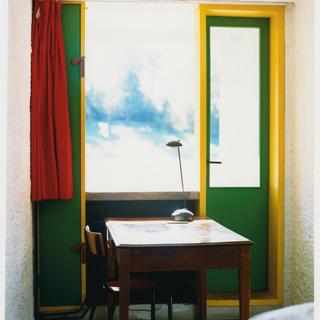


A convent and a hotel. Step inside Le Corbusier's La Tourette convent near Lyon
FeatureSomewhere between radical simplicity and brutalist aesthetics, this concrete monolith designed by the Swiss architect in the 1950s is both the Dominican friars' living quarters and an unusual, spartan hotel. This gigantic listed building offers full-board accommodation, with meals in the cafeteria and overnight stays in monk's cells.
From the railway station in L'Arbresle, a road winds up to the hilltop village of Eveux, home to 1,200 inhabitants and located 25 kilometers west of Lyon. It's not uncommon to see Japanese and American visitors lugging wheeled suitcases up the steep incline. People come from far and wide to visit La Tourette convent, a radical and fascinating work of art created by Le Corbusier between 1953 and 1960 for the Dominican friars. Today, a community of nine monks continues to live there, welcoming those seeking a few days of retreat.
After entering the seven-hectare wooded estate, passing the farmhouse and the old château, there's a bridle path that runs alongside the forest. The idyllic landscape of pines, oaks and chestnut trees tinged with autumn's golden hues gives no clue of what lies ahead. First comes a moment of astonishment and a sense of awe when faced with the windowless concrete wall, around 20 meters high, topped by a hollow rectangle containing a bell. This monolithic church, with its stark brutalist style, resembles a hydroelectric dam more than a religious building. Extending from it is a parallelepiped of concrete, pierced by a hundred or so loggias with perfectly identical openwork balconies.
Perched on stilts – a signature feature of the architect that he held dear – the compact structure seems to balance precariously on the slope descending toward the plain. "Le Corbusier chose to place the convent where the slope is steepest," said Friar Charles Desjobert. A graduate in architecture and heritage architecture, he knows the building − which was listed as a historic monument in 1979 − better than most. "Instead of starting from the bottom, he first aligned the top line of the building with the Lyon mountains opposite." After the initial shock, the structure, resembling an ocean liner moored to the path by a short footbridge, reveals itself in greater detail. "Beyond the industrial and defensive appearance that strikes you first, you can spot more archaic elements, like the gargoyles or the slightly overhanging upper floors, resembling corbels."
You have 84.88% of this article left to read. The rest is for subscribers only.
